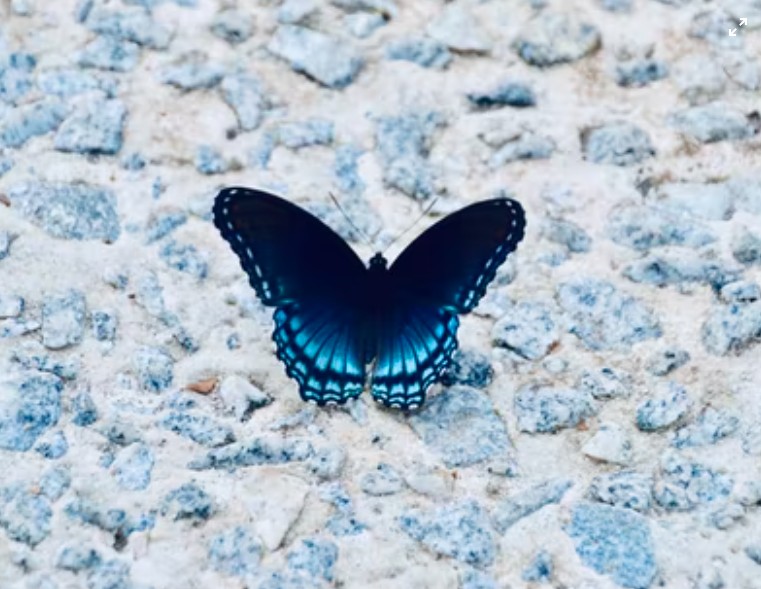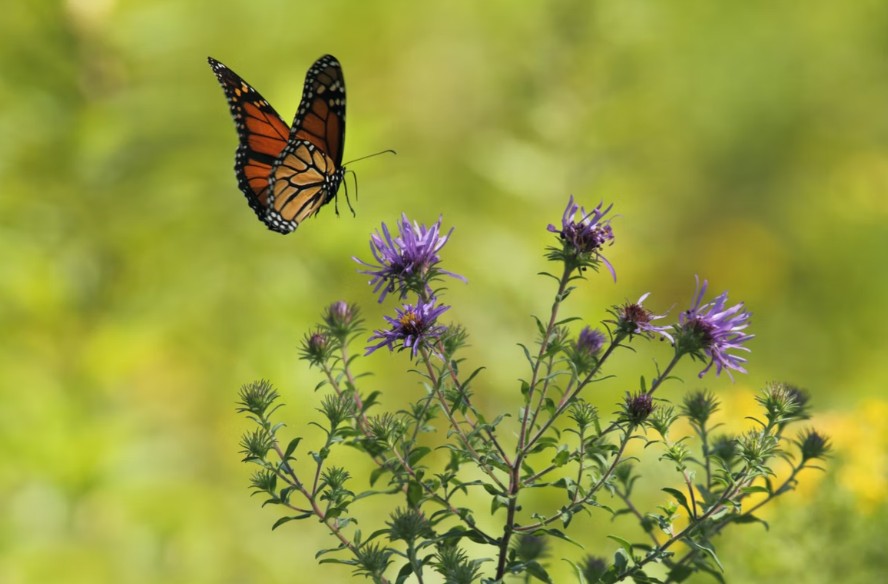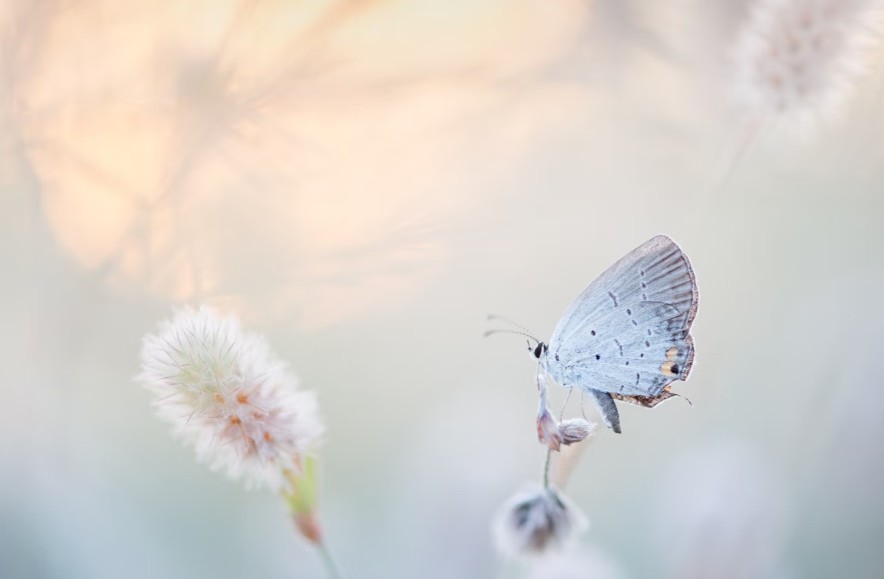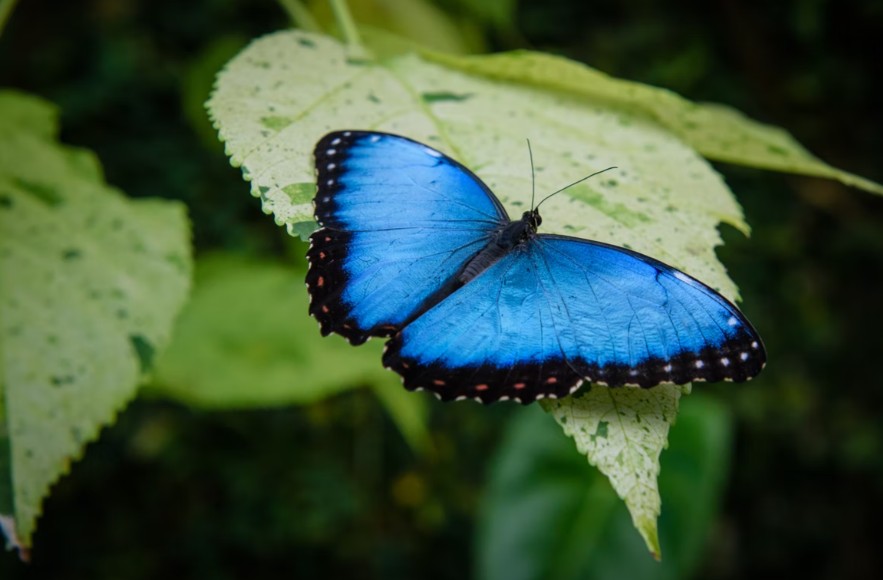
How To Tell If A Butterfly Is Male Or Female
Butterflies can be hard to identify, especially if you’re trying to tell male from female. Luckily, there are some easy ways of identifying the sex of your butterfly. Here’s a quick guide on how to tell the difference between male and female butterflies:
When you have a butterfly in your hand, examine its eyes.

When you have a butterfly in your hand, examine its eyes. Male butterflies have eyes on the sides of their heads that are smaller than those of females. Female butterflies’ eyes are on top of their heads, which is where they see the most clearly when it comes to finding food or mates. Males tend to have larger eyes because they don’t rely on sight as much as females do for mating purposes.
In addition to examining where a butterfly’s eyes are located and how large they are relative to each other, you should also look at the coloring around them. If there is no color or pattern surrounding the eye (think blue or green), then chances are good that this is a male butterfly—they tend not to have any coloration around their faces at all! However if there is some sort of shade around one eye (like purple), then this may indicate that it’s female since many species show off their sex through pigmentation changes along their head regions.”
Examine the butterfly’s antennae.

Antennae are the long, thin antennae that male and female butterflies have (but not all species). They’re used to sense their surroundings, communicate with other butterflies, and help them navigate. In general, males have much larger antennae than females do. The length of a butterfly’s antennae is related to its age; older butterflies tend to have longer ones.
Look at the tails of swallowtails and purple hairstreaks.

A butterfly’s tail is an indicator that can help you determine whether a butterfly is male or female. The tails of swallowtails are longer than their wings, while purple hairstreaks have tails that are shorter than their wings.
Both males and females of both species have very similar appearances, but they look different when they’re young. If you see a swallowtail with long tails, it might be an adult female ready to lay eggs on milkweed plants!
Look for orange or grey spots on a peacock’s wings.
Now that you know what to look for, it’s time to put your new knowledge into practice. Let’s say you see a peacock butterfly fluttering around in your backyard and want to know if it is male or female. The easiest way to tell is by looking at its wings:
- If the butterfly has orange or grey spots on its wings, then you have found a male peacock butterfly!
- If there are no spots on the butterflies wings, then it is most likely a female peacock butterfly.
Check for brown or black spots on fritillary butterflies’ lower wings.
If you’re still not sure of the gender of your butterfly, try examining the lower wings. All fritillary butterflies have brown or black spots on their lower wings that can help determine which species your butterfly belongs to and whether it’s a male or female. These spots are used for identification purposes, so each species has its own set of spots.
If you want to figure out where your butterfly was born and raised, look at its lower wing markings: if they’re dark brown or black with an orange ring around them, then it was likely born in Europe or Asia; if they’re dark brown or black without an orange ring around them, then it was likely born in North America; if they’re white with small red dots below them and no other colors present anywhere else on their body (including under their wings), then there’s no way to tell where this little guy came from!
Identify painted lady butterflies by their eye-spots.
You can tell the sex of a butterfly by its eyespots. Painted lady butterflies have two eyespots on their lower wings and one on their upper wings. Males typically have black spots, while females have red ones.
The easiest way to tell if a butterfly is male or female is to look at their eyespots! Male painted ladies have black spots, while females have red ones!
Find a red spot on the underside of the tortoiseshells’ wings.
To tell if a butterfly is male or female, look at the underside of its wings. You should see a red spot somewhere on the bottom of each wing.
If you see red spots on both sides of your butterfly’s wings, then it’s definitely male! If only one side has red spots and the other doesn’t have any at all (or only has small ones), then your butterfly is most likely female.
Wing shape
The shape of a butterfly’s wings can be used to help you determine the sex. Butterflies with round or oval wings are typically female, while butterflies with triangular wings are typically male. You’ll find that many species have both males and females with different wing shapes within the same population, but each species tends to favor one type over others in general.
Color patterns
For many butterfly species, the males and females of a single population will have a unique set of color patterns that is not shared with other populations. This means that you can use butterfly color patterns to tell whether a particular individual is male or female. You can even use this method to tell whether an individual belongs to a particular subspecies or geographic population, if there are enough differences in those groups’ color patterns.
For example, in some species (like monarch butterflies), males and females look similar but have different wing shapes or patterns on their wings; while in others (like tiger swallowtails), they look very different from each other except for their antennae which are strikingly similar!
Eggs
If you want to tell the difference between butterflies of the same species, look for differences in their eggs. Male and female butterflies of most species lay completely different types of eggs. The easiest way to determine which is which is by observing how they look when laid on a leaf.
- Eggs laid by male butterflies are generally larger than those laid by females and have a more rounded shape.* Eggs laid by male butterflies are generally larger than those laid by females and have a more rounded shape.
- Female butterflies lay relatively large eggs that can contain up to 50% yolk content (the yellowish parts). When first laid, these eggs tend to be grayish green or brownish red with no visible markings.* Female butterflies lay relatively large eggs that can contain up to 50% yolk content (the yellowish parts). When first laid, these eggs tend to be grayish green or brownish red with no visible markings.* If you find an egg in your yard, check it carefully after about one day; if it has turned white but still feels soft inside then it must be newly hatched!
Behavior
Male butterflies are more likely to fly in the open, while females are more likely to stay in one place. Females’ wings also tend to be bigger than males’, so it’s easier to tell what gender they are.
Females have a longer proboscis, which is basically their tongue—and there’s an easy way to tell if yours has one: just look up! If you’re holding your butterfly and facing her head-on, she’ll have a longer proboscis when she has her wings closed than when she has them opened.
Shape of abdomen
To determine the sex of a butterfly, you’ll be looking at the shape of its abdomen. Butterflies have two different types of abdomens: male and female. The difference can be seen by looking at the underside of each butterfly’s body (the side opposite from where it would normally land).
Female butterflies have long, soft abdomens that curve upward while males’ are short, hard and straight.
Conclusion
We hope that you have learned some useful tips on how to identify butterflies by their gender. This information is especially helpful when trying to determine whether or not a butterfly is in danger of extinction. With every species that we lose, we take away something special from our planet and its biodiversity. If you want to help protect these beautiful creatures and ensure their survival, then learn as much about them as possible!